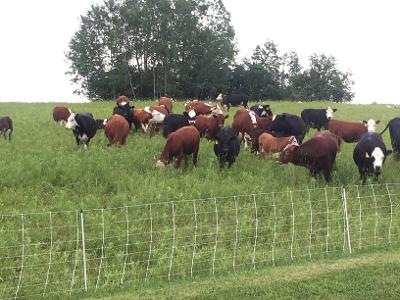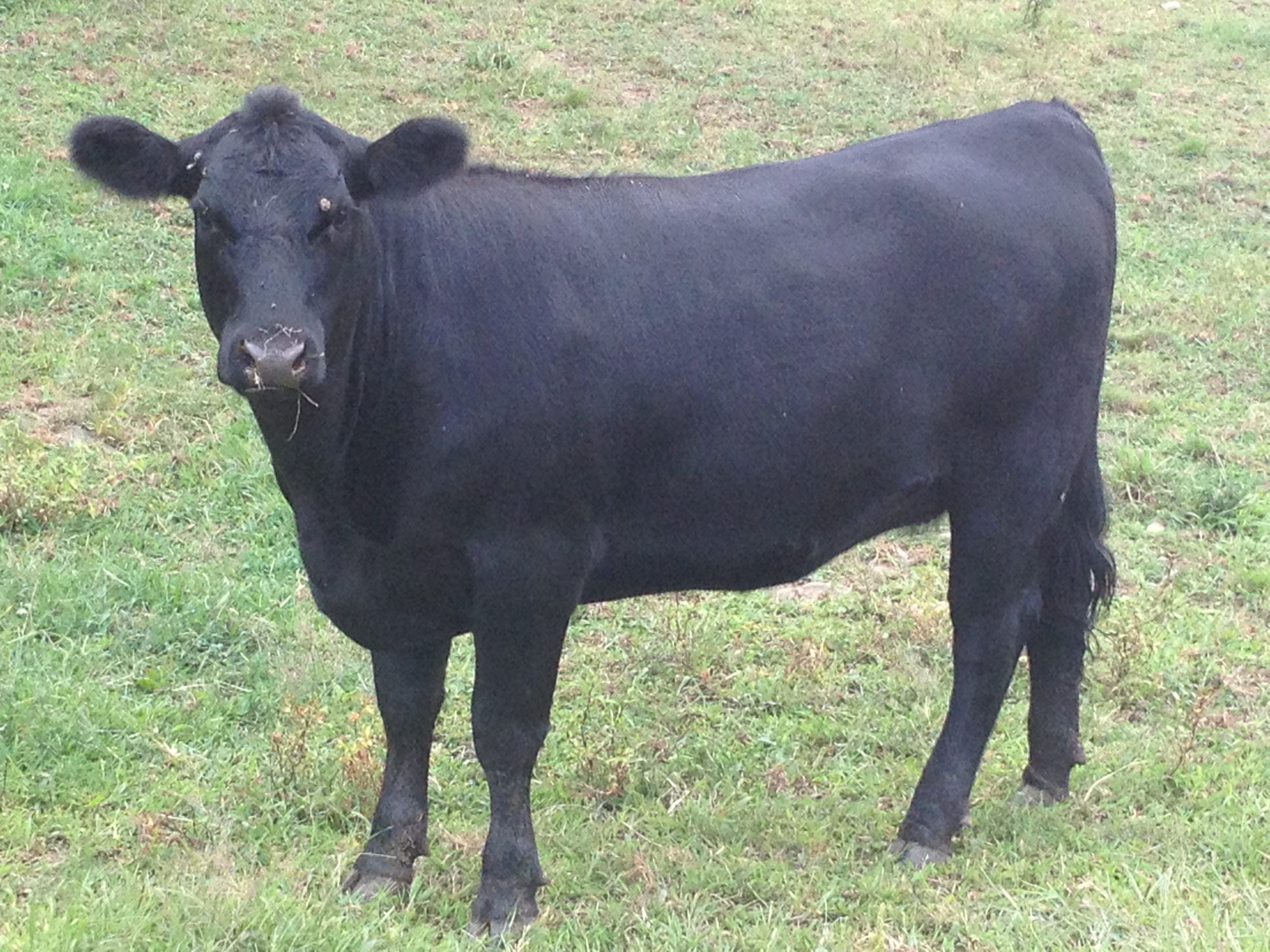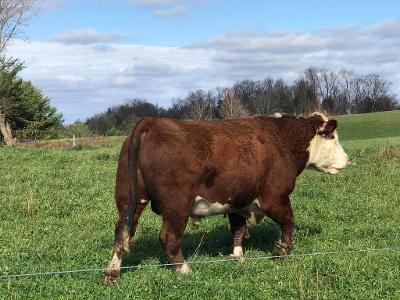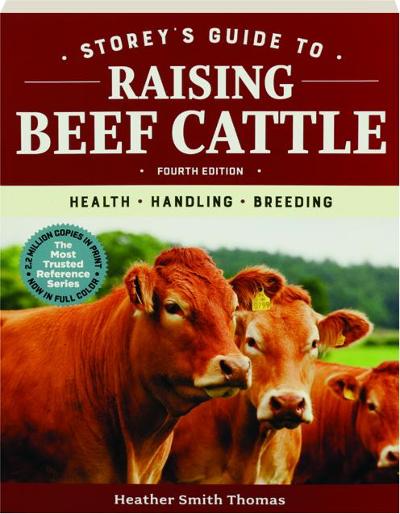Selecting a Beef Cattle Breed
In part two of our “What’s Your Beef?” series on raising cattle on small farms, we help you answer the questions of what breed of beef cattle you should get.

The author’s herd of mixed Hereford, Black Angus, and Red Angus cattle.
Rich Taber / CCE Chenango
In the first article in this series in the summer edition of SFQ, I outlined several of the many topics with which you need to become familiar with if you wish to have a successful beef cattle enterprise. This article installment’s purpose is to discuss the several breeds that are available from which you can choose. Even more important is to select animals that have good genetic qualities, which is probably more important than the particular breed that you might end up with.
First, I will mention some of the many breeds that are available. Beef cattle breeds, at least here in the Northeast, have their origins from two different parts of Europe. The first and most common are the British breeds. Black Angus, Red Angus, and Herefords are the Fords, Chevys, and Dodges of the beef cattle world and are the most common and popular. There are innumerable sources of these animals available in our part of the world. Some other popular British breeds are Devons, Dexters, Belted Galloways, Red Polls, Beef Shorthorns, and Scotch Highlands. The other beef breeds originated in mainland Europe and are referred to as the continental breeds. Blond d’Aquitaine, Charolais, Chinanina, Gelbvieh, Limousin, Maine Anjou, Normande, Piedmontese, Pinzgauer, and Simmentals all have their respective followings. In many or the hotter parts of the country you find a number of breeds that have Brahman genetics in their makeup; in brutally hot climates they do fine but are not all that common here in the northeast.

A young, purebred Angus cow.
Courtesy of Rich Taber / CCE Chenango
In selecting a breed, I would suggest that you first pick a breed that is common in your area; that way you will find an infrastructure of farmers and breeders that can answer many of your questions. You might want to consider having crossbred cattle too. Why crossbreds? In nature there is a property known as “hybrid vigor,” meaning that crossbred animals, particularly first-generation crosses, tend to be healthier, stronger, and out produce the pure breeds that they were derived from. A very popular cross here in the Northeast in the “Black Baldie,” a Hereford and Black Angus cross. They look like a Hereford with mostly white heads and faces but their body color in usually black. Another popular cross is the Hereford and the Red Angus; the cows tend to look like Herefords with a lot of red on their heads. If you intend to have a cow/calf herd and plan on selling calves as feeders, or finishing them yourself, crossbreds are a very viable alternative.
Should you consider purebred/registered stock? If you have plans on being a purebred breeder with the intent to sell pure stock to other people, this might end up being a good alternative. However, if you are a beginner, I would suggest getting your hands on some good commercial (unregistered) stock to get your feet wet and to learn the ropes with. The herd on my home farm has historically been a series of crosses of the “big Three”; Herefords, Black Angus, and Red Angus. I recommend these breeds as you can find good animals in many different parts of the state. Black Angus are very popular, and the Angus Association has done an excellent job in recent years in promoting their breed. Black hided cattle tend to bring a premium price, so much so that several other breeds of cattle have developed lines of black cattle to cash in on that premium. The Simmental breed is a prime example of this, and “SimmAngus” crosses have become very popular in recent years.
I personally tend to favor a lot of Hereford blood in my herd, and their crosses, in particular because the animals are quite docile and easy to work with. This year I replaced my Hereford bull with a Red Angus to keep up the hybrid vigor in succeeding generations.

The author’s former herd sire, a purebred Hereford now on duty at a neighboring farm.
Courtesy of Rich Taber / CCE Chenango
You might notice that I have not mentioned any dairy cattle breeds. You can indeed raise dairy beef, and I won’t discourage you if you are so inclined, but they take a bit longer to finish, and generally bring lower prices at the cattle markets. For home use you can do well with a few of these as well as with crosses of some of the other dairy breeds. In some parts of the country, a certain percentage of Holstein dairy cattle are being crossed with Black Angus due to a number of factors. These make a good cross and if you can find a source of calves you might do well with them.
As I alluded to earlier, where you get your animals from is FAR more important that what the particular breed is. A few years ago, in some farm machinery articles that I wrote for this publication, I warned people to stay away from “tractor jockeys” as a source of a good used tractor — some of them tend to be the equivalent of a used car salesman. In a similar vein, I would caution you to stay away from cattle sale barns as a source of breeding stock. I spend my share of time at cattle sale barns, but much of this time is to network with other farmers and to stay abreast of markets. If it’s a dispersal sale, and the farmer is getting rid of all of their cattle that might be acceptable. But many times, an animal consigned to a sale barn is destined for the slaughterhouse. Another thing that I have noticed, even when the animals are being sold as “breeding stock”, you have no idea how old the animal is. I prefer to buy bred heifers, or younger cows that are 2-3 years old and are going to be around for many years. A beef cow can last for upwards of ten years or so, and do you want to pay the same price for a ten-year-old as you would a 2-year-old?

This book is an excellent reference for beginning beef producers.
Courtesy of Rich Taber / CCE Chenango
When it comes to selecting a bull, I always suggest that you buy your bulls from a reputable breeder and avoid ‘Sale Barn Taurus.” A bull that comes from stock that has been selected for having low birth weights is important too. Taurus, the barnyard bull of no known genetics, may just happen to sire huge calves that you end up having to pull from cows in the balmy month of February during a blizzard! Many of your better breeders use artificial insemination, and the best genetics are available by doing so. Do not take shortcuts in bull selection!
You can source good cattle in the classified ad sections of farm papers, such as Country Folks, the paper in which many of you receive Small Farm Quarterly. The New York Beef Producers Association is well worth joining, as they put out an excellent magazine with ads throughout it. Each year they also produce a breeder’s directory of producers from all over NY State. Remember, you get what you pay for and if its good breeding stock that you are looking for do your homework and don’t take shortcuts!

